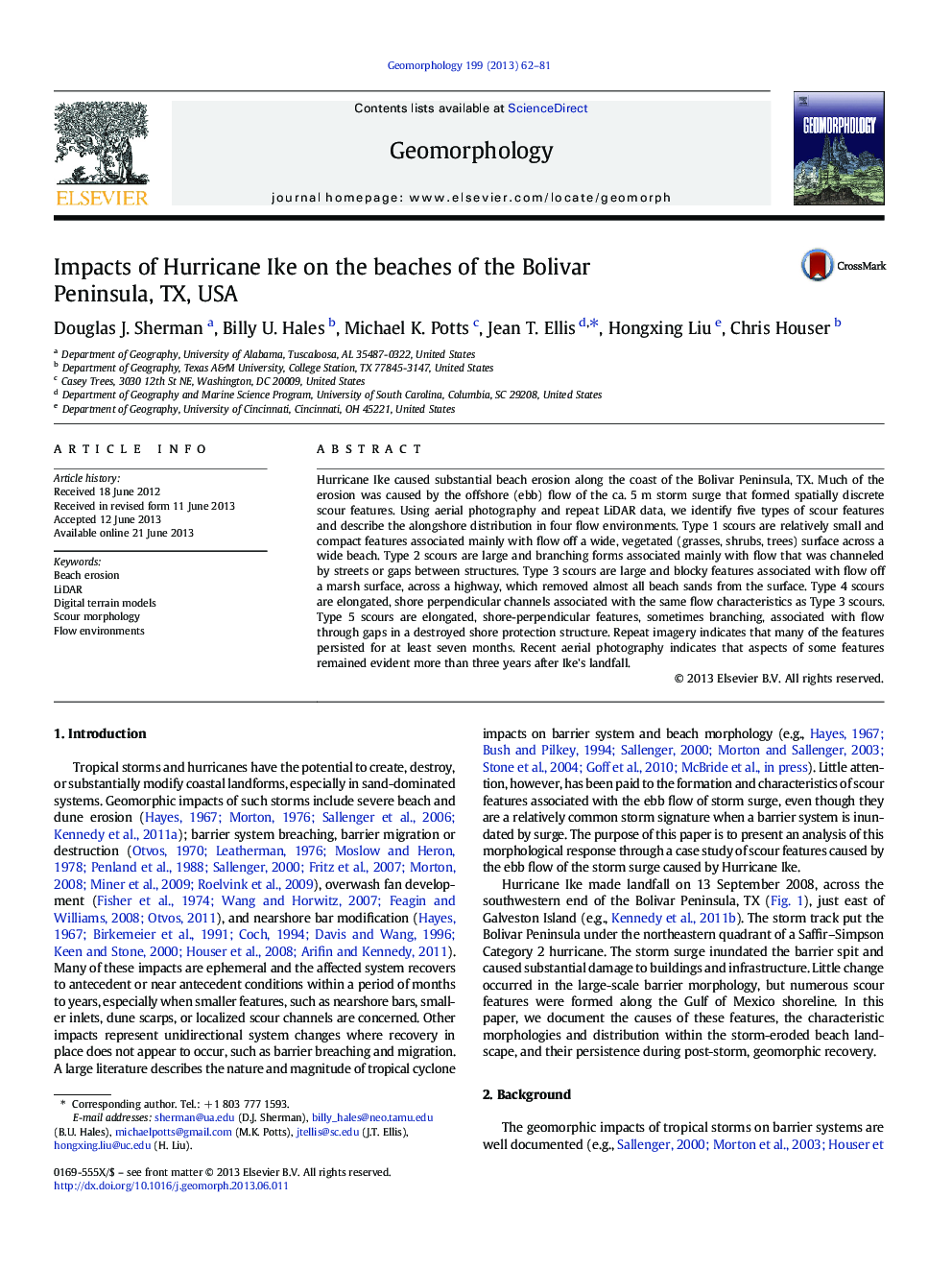| Article ID | Journal | Published Year | Pages | File Type |
|---|---|---|---|---|
| 4684790 | Geomorphology | 2013 | 20 Pages |
•We identified and characterized 454 scour features formed by Hurricane Ike ebb surge.•Five characteristic scour morphologies were identified in 4 main flow environments.•Hurricane Ike eroded approximately 4x106 m3 from Bolivar Peninsula beaches.•Maximum ebb surge velocities likely exceeded 2 ms− 1.•The persistence of some scour features exceeds 3 years.
Hurricane Ike caused substantial beach erosion along the coast of the Bolivar Peninsula, TX. Much of the erosion was caused by the offshore (ebb) flow of the ca. 5 m storm surge that formed spatially discrete scour features. Using aerial photography and repeat LiDAR data, we identify five types of scour features and describe the alongshore distribution in four flow environments. Type 1 scours are relatively small and compact features associated mainly with flow off a wide, vegetated (grasses, shrubs, trees) surface across a wide beach. Type 2 scours are large and branching forms associated mainly with flow that was channeled by streets or gaps between structures. Type 3 scours are large and blocky features associated with flow off a marsh surface, across a highway, which removed almost all beach sands from the surface. Type 4 scours are elongated, shore perpendicular channels associated with the same flow characteristics as Type 3 scours. Type 5 scours are elongated, shore-perpendicular features, sometimes branching, associated with flow through gaps in a destroyed shore protection structure. Repeat imagery indicates that many of the features persisted for at least seven months. Recent aerial photography indicates that aspects of some features remained evident more than three years after Ike's landfall.
